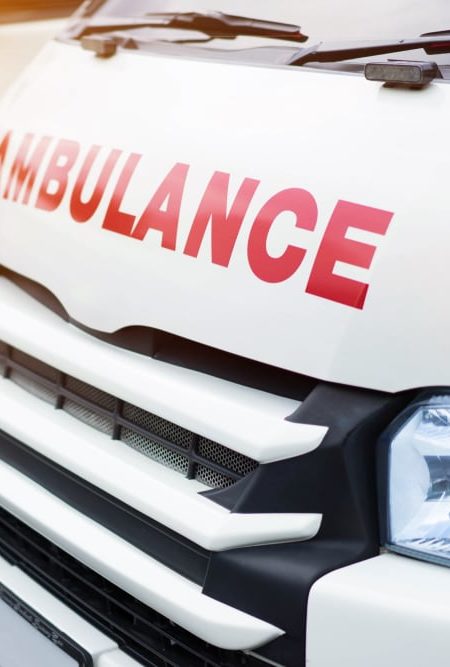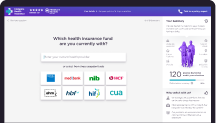According to a recent survey, 25 per cent of Australians mistakenly believed ambulance transportation was free across all Australian territories and another 24 per cent thought the costs were a lot lower than in reality. Moreover, Australians have tens of millions of dollars in unpaid ambulance bills. Ambulance costs are not covered under Medicare and subsidies from the government could be limited (depending on the state).
In Victoria, the average cost of an emergency transport is over $1100 but in rural areas, it could be as high as $1800 [1]. Victoria is up there on the list when it comes to the heftiest call-out fees. In Queensland and Tasmania, ambulance services are free.
In 2016, Ambulance Victoria (AV) was reportedly pursuing $40 million debt in unpaid fees from their residents.
As suggested by the tens of millions of dollars in unpaid ambulance bills, you never know when you may need to call triple zero for help and it’s best to be prepared so you are not slapped with a gigantic bill after an unexpected incident. Even if someone else calls an ambulance on your behalf and you refuse service, you might still be charged for it [2].
Keep reading to find out how you can make smart choices about your ambulance covers!
If you want to know more about ambulance services and insurance coverage in New South Wales, please see our article here.
Overview of the State Ambulance Service and Trends in VIC
Ambulance Victoria (AV), an entity formed after the merger of the Metropolitan Ambulance Service, Rural Ambulance Victoria and the Alexandra and District Ambulance Service, is required by the Ambulance Services Act 1986 to respond rapidly to requests, provide specialised medical treatment for patients in critical conditions while transporting patients, and promote public education in first aid [3].
AV has implemented many initiatives to improve their efficiency. Like many other state ambulance agencies, AV has focused on improving its ability to prioritise AV’s workload on true emergency situations.
In 2017-2018, Ambulance Victoria responded to nearly 900,000 emergency and non-emergency incidents and established Australia’s first stroke ambulance with CT scans and other advanced treatments during emergency transport. In addition, they improved residents’ access to telehealth services to reduce non-emergency routine calls.
There are more than 260 ambulance stations across VIC. In 2014, Victoria’s ambulance system was dealing with serious issues such as lack of competent paramedics. Since then, they have significantly expanded their ambulance service budget ($58.5 million for 2018-2019) to better recruit more paramedics and nurses and provide high-quality training.
There are 3 priority codes used by Ambulance Victoria (AV):
- Code 1: A time-critical case such as cardiac arrest or serious traffic accidents
- Code 2: An acute but non-time critical cases such as leg injuries
- Code 3: A non-urgent routine case such as ongoing back pain
AV decides whether the patient’s situation is emergency or non-emergency and what type of ambulance transport services and/or treatment the patient receives.
Run Down of Ambulance Costs and Government Benefits
Below table outlines the standard cost structure for ambulatory services in VIC as of January 2019 [4]. These fees are shown without GST (Goods and Services Tax); however, GST fees often apply to public hospitals.
| Emergency Road Transport Fees | |
|---|---|
| Metropolitan Emergency Road | $1,234 |
| Regional and Rural Emergency Road | $1,820 |
| Non-Emergency Road Transport Fees | |
|---|---|
| Metropolitan Non-Emergency Road | Stretcher: $333 |
| Clinic car*: $110 | |
| Regional and Rural Non-Emergency Road | Stretcher: $563 |
| Clinic car*: N/A | |
*clinic cars only available in Metropolitan Melbourne and selected and selected regional and rural locations
| Treatment without Transport | |
|---|---|
| Metropolitan, Regional and Rural | $532 |
| Air Transport Fees for Emergency and Non-Emergency Cases | |
|---|---|
| Fixed Wing (Aeroplane) | Variable charge: $2,188 |
| Fixed charge: $2,959 | |
| Rotary (Helicopter) | Variable charge: $11,005 |
| Fixed charge: $26,197 | |
Unlike in NSW, there is no maximum charge set by the Victorian state government.
Individuals Entitled to Concessions
The Victorian state government provides concessions to “Community Service Obligation (CSO)” patients. These concession patients receive free, clinically necessary ambulance services. According to the updated definition, “clinically necessary” means that the patient requires active clinical monitoring/care/supervision during transport. Otherwise, they must use other means of transportation.
Veterans, Health care card holder, Victorian pensioner concession card holder, and persons who are required to receive compulsory mental health service are considered as concession patients. If you only have a Commonwealth Seniors Health Card, you are not entitled to these discounts.
Asylum seekers (who are part of designated community support agencies) are allowed to receive ambulance transport and ambulance treatment for free as well.
Go to the Victoria’s Department of Health and Human Services website here to see the full list.
Finding the Right Ambulance Covers in Victoria
Given the high average ambulance service costs in Victoria, we strongly advise you to get coverage through AV’s ambulance subscription membership or registered private health insurance.
1-year AV membership is around $94 for the family plan and $47 for the single plan. It covers emergency ambulance transport, ambulance treatment without transport, and clinically necessary non-emergency transport services. It also offers an interstate travel insurance policy.
If you’re looking for private health covers including ambulance services (as part of your hospital and extras covers), here are the things you should consider:
- Interstate travel: Normally you are only covered in the state in which you are a resident, you might want to opt in for travel insurance.
- Emergency ambulance transportation and/or ambulance treatment: Make sure you check if your insurance policy has restrictions on air ambulance transport (especially if you live in rural areas). Some policies might also only cover emergency transport or emergency treatment without transport.
- Restrictions on non-emergency ambulance transportation and/or ambulance treatment: Certain funds or policies do not cover non-emergency, not clinically necessary ambulance transport. Carefully think about whether or not you want to be covered for non-emergency services. If you need transport services from a private healthcare facility, the ambulance transport is completed by the facility and the cost could be passed down to the patient.
- Waiting period: Keep in mind that there are waiting periods also applied to ambulance covers. If you call an ambulance for pre-existing conditions, then there is a 12-month waiting period (same as regular hospital covers). The waiting period for emergency ambulance services is often within a few days and for non-emergency ambulance services, it’s normally within 2-3 months. For AV membership, there is a 14-day qualifying period when you first join.
- Ambulance insurance costs: Obviously cost is a big factor – you want to get the most bang for your buck. Since you are not likely to find stand-alone ambulance covers (they will be included in your combined hospital and extras covers), you will have to make your decision based on a variety of needs.
Nobody can predict the future so don’t put this off until the moment you need it. We all get into one or two minor accidents in our lifetime and you don’t want to be slapped with a 4-figure bill.
Act now and chat with our agent to get advice on finding the right ambulance covers!
Sources
[2] https://www.abc.net.au/news/2018-07-20/ambulance-fees-around-australia/10015172
[3] https://www.ambulance.vic.gov.au/wp-content/uploads/2018/12/AV-Annual-Report-2018_lores.pdf





